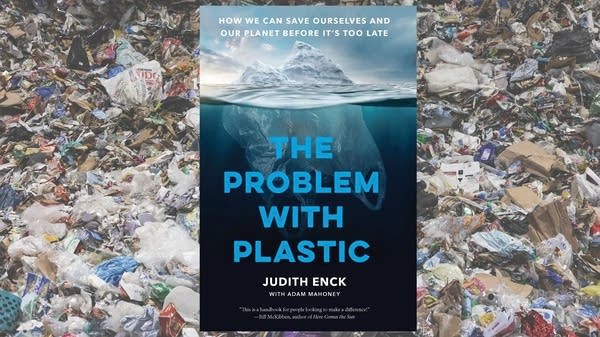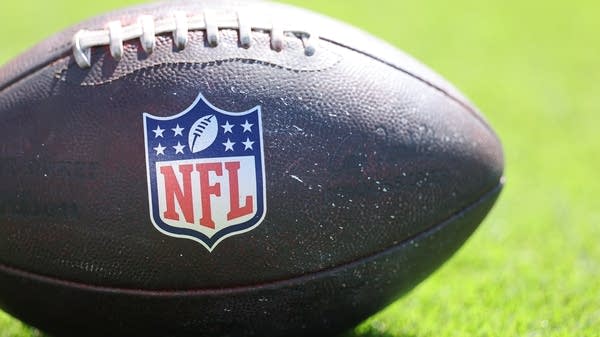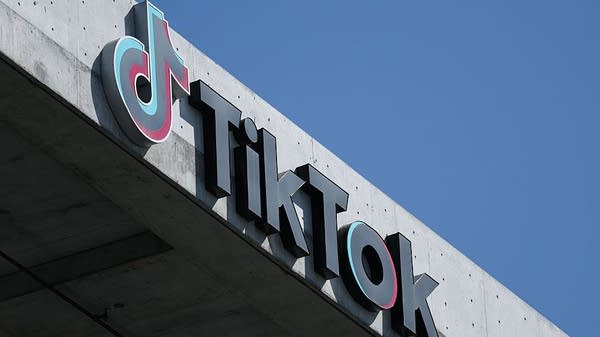How to get to space without NASA
Julian Guthrie's new book, "How to Make a Spaceship" details the founding of the XPRIZE.

There was a time in the not too distant past when space – the getting-there part, at least – was something that only super power nations had the resources to attempt. But in 1996, Peter Diamandis launched the XPRIZE – a monetary prize to be awarded to the first group of private citizens to reach suborbital space.
The founding of the prize and the race to win the first one is the subject of a new book by Julian Guthrie called, “How to Make a Spaceship: A Band of Renegades, an Epic Race, and the Birth of Private Spaceflight.”
On getting the idea to start the prize:
“He got this idea for a modern day space prize, kind of a private race to space by reading Lindbergh’s, “The Spirit of Saint Louis, reading that a fellow named Raymond Orteig had offered a $25,000 prize to aviators who could fly from New York to Paris or Paris to New York. And Peter had this ah-ha moment.”
On why it wasn’t an obvious idea at the time:
“It was completely crazy, it was a crazy notion. Peter realized that NASA was either winding down manned space missions, the Apollo missions were canceled and then there were these tragedies that involved the space shuttle. Private space just did not exist. The three largest governments, United States, the then Soviet Union, and China, were the only ones who were able to send man and machine to space and return him safely back to earth. So thinking about this, to do this privately, was a seemingly crazy idea.”
Read an excerpt from the book:
Alone in a spartan black cockpit made from carbon fiber and epoxy glue, sixty-three-year-old test pilot Mike Melvill rocketed toward space. He had eighty seconds to exceed the speed of sound and begin the vertical climb to 100 kilometers, a target no civilian pilot had ever reached. The rocket motor burned liquid nitrous oxide and a form of solid rubber fuel, generating a violent seventeen thousand pounds of thrust that knocked him back into his seat and screeched like metal scraping metal. Wind shear rocked the plane 90 degrees to the left and Melvill, right hand on the stick and feet at the rudders, tried to correct the problem but trimmed the plane 90 degrees to the right, banking a full 180 degrees, a move bordering on aerobatics. He was off course by 30 miles, shooting nearly straight up and closing in on Mach 1, the chaotic, once mythical region around 700 miles per hour known to pummel planes and kill their pilots. There was a chance he would not make it back alive. If he did, he would make history as the world’s first commercial astronaut.
“Please, Lord, don’t let me screw this up,” Melvill said under his breath, paraphrasing the test pilot’s prayer.
Melvill would lose stick and rudder control as he went faster than the speed of sound, as shock waves dampened control surfaces and the air refused to move out of the way. The self- described daredevil, known to kayak over waterfalls and do headstands on boulders at the edge of cliffs, was hurtling through the atmosphere in an air-launched, podlike rocket the size of a small bus, built by a team of about forty engineers in California’s high desert. The idea was to do what only the world’s biggest governments— the Soviet Union, the United States, and China— had done before: get people to space. More than twenty thousand people—Buzz Aldrin among the — had made their way by car, bike, plane, and motor home caravan to the Mojave Desert, 100 miles north of Los Angeles, to see the early morning flight of the winged ovoid called SpaceShipOne. Peter Diamandis, an entrepreneur who had dreamed up an improbable private race to space, with a $10 million prize for the team that made it there first, was watching from the desert floor. His life’s work had brought him to this day, when a manned spaceship, built and flown without the government’s help, would attempt to rocket out of Earth’s atmosphere and return safely to a runway just a dozen feet away. So much was at stake, not only for would‑be space travelers, but for Diamandis himself. Melvill’s six-thousand-pound, hand-flown spaceship streaked through the sky nearly straight up, slashing the blue expanse with a jagged white line.
Very rough ride initially, a lot of pitching,” Melvill said, his breathing labored as he talked to flight director Doug Shane in Mission Control overlooking the Mojave flight line. Directly behind Melvill’s seat was the hybrid rocket engine with three thousand pounds of nitrous oxide and eight hundred pounds of rubber fuel. Melvill added, “Slowing down on me. The engine shut down. I did not shut it down. It shut down on its own. . . . It didn’t run very well.” The engine had cut off at around 170,000 feet after a seventy-seven-second burn, but inertia propelled his craft toward apogee, toward his target of 62 miles above Earth, or 328,000 feet. This was the Karman line,* named for Hungarian physicist Theodore von Karman and widely accepted as the altitude above the Earth’s sea level representing the start of space.
“Start the feather up” came the call from Doug Shane. The “feather”was the rocket plane’s secret weapon, wings that bent in half to add drag—aeronautical concept designer Burt Rutan’s promising but still unproven invention for delivering man and machine back to Earth. Rutan was a master of the improbable, creating flying machines out of unconventional composite materials and surfboard technology, moving wings forward and engines back, and delighting in defying symmetry and being a creative battering ram to establishment aerospace. But he had zero experience sending people to space. There were times in the program, especially on days like today, when Rutan thought to himself: This is really out there. We are absolutely crazy to be taking this kind of risk.
“Feather unlocked. Feather coming,” Melvill said as the white rocket rotated in the thin air. “Trying to get it upright.” Melvill had flown 9,500 hours in more than 150 different types of planes—even piloting one whimsical Rutan design by riding on top of it like a jockey rides a horse. But he had never encountered the violent power of a rocket. He peered out the small, round, double- paned plastic portholes— there were sixteen nine-inch-diameter windows around the nose. The inside window was made of Plexiglas, and the outside was the even stronger polycarbonate. During the building and testing phase, Rutan handed his pilots welding axes and challenged them to break the windows.
It was around eight a.m. in California, and from near the top of his parabolic arc,* Melvill could see frothy clouds along the Los Angeles coastline, browns and beiges of the desert, the shimmery coast of Baja California, and the forests and mountains of the Sierra Nevada—enormous peaks that from this height looked as flat as the desert to the south. The clouds were varied, in shades of white, platinum, and gray. Wisps turned thicker like silvery cloth, and waves of ethereal gray rolled in the sky like waves on an open ocean. Lakes and sinewy rivers glistened liquid gold. The Earth’s thin blue line looked a million miles away. He now understood why astronauts were forever changed by “Earth gazing,” by taking in how fragile and beautiful this little blue marble looked from above.
Melvill was not far from the skies above Edwards Air Force Base, where they had been given permission to fly in the tightly restricted area known as 2515. Edwards was the dry, hot, isolated Valhalla of test pilots and the Mecca of experimental planes, the place where the sonic boom was born, where pilots were tested for skill and mettle and some of the world’s fastest, most powerful planes were let out to gallop. Melvill watched the energy height predictor, an instrument that gave a digital readout of the final altitude the plane would reach once the engine was off. His friend and mentor Albert “Scotty” Crossfield, the first pilot to fly twice the speed of sound, and the pilot with the most experience flying the military’s X‑15—a matte-black brute of a rocket plane that in 1963 first reached an altitude of 100 kilometers—told him he would feel disoriented after lighting the rocket motor and pulling back on the stick.“You will think the nose is coming up and you’re going to go over on your back,” Crossfield told him. “Everyone in the X‑15 felt that.”
“Doing a good job with RCS,” Doug Shane said of the cold-gas reaction control system, small thrusters used to maneuver the vehicle’s orientation.
“Everything is good here, Doug,” Melvill reported.
From Mission Control came the announcement, “Three-twenty-eight,”and the sound of clapping, which quickly dimmed. After that moment of euphoria, it was uncertain whether Rutan’s SpaceShipOne, registration number N328KF, had made it to the start of space. They would have to wait for the data to come in to be sure. Rutan and his team settled back into their chairs. The toughest part of the mission lay ahead. Space shuttle Columbia disintegrated during reentry the year before, in 2003, killing all seven astronauts on board. The X‑15—the only other winged vehicle to get to space—had ferocious loads when reentering Earth’s atmosphere, traveling at Mach 5 and coming in at a forty-degree, nose-down attitude. X‑15 pilot Mike Adams, a friend of Rutan’s, was killed in 1967; after reaching a peak altitude of 266,000 feet, the thirty-seven-year-old Adams, a scholar and top test pilot, was at around 230,000 feet when he went into a violent Mach 5 spin and couldn’t recover. The rocket plane broke apart, pieces scattered for nearly 60 miles on the desert floor.
Melvill looked at the instrument panel. Pilots were told to trust their instruments more than their bodies, but Melvill needed to feel the plane. He flew through the seat of his pants, literally feeling the plane through his rear end, the same way he once rode motorcycles in races. Planes, like people, had their quirks. Melvill flipped the switch on top of the stick to move the horizontal stabilizers, the movable flaps used for pitch and roll control. He reset the trim for reentry to thirty degrees on each side. He waited and watched. The feather had deployed perfectly; with the engine off, he could hear the feather make a thud against the forward tail booms. He looked again at the instruments.
Something was wrong.
“I’d like to see the stab trim here,” Shane said quickly. Control of the plane’s horizontal, fixed-wing stabilizers and elevons—the hinged flaps on the trailing edge of the stabilizers—was operated by sophisticated electric motors and gear boxes mounted in the tail booms and used at high altitudes and speed when stick and rudder were ineffective. The stabilizers had to be precisely set at plus-ten degrees for reentry.
Rutan studied the telemetry. For a moment, no one moved. No one said a word. The only sound in Mission Control came from more than 60 miles up, from Melvill repeatedly, quickly, flipping switches.
“Whoa! Pull the breakers!” said Rutan’s chief aerodynamicist, Jim Tighe. The breakers initiated the backup motor. Melvill had tried that. Nothing. The stabilizers were unevenly positioned, with the left one at thirty degrees and the right at ten degrees. A twenty-degree difference would result in a high-speed, potentially fatal spin. Melvill knew enough about physics to know that his rocket motor took him out of the Earth’s atmosphere at Mach 3—three times the speed of sound—and that gravity would pull him back at the same speed. There was little if any chance of surviving reentry with asymmetrical stabilizers. The only way out of this rocket was through the nose; unlike in the X‑15, there were no ejection seats. In an emergency, Melvill would have to first depressurize the cabin, unlatch the front end of the plane by pulling a lever from the floor up, pop the nose of the plane right off, and somehow jump out the front—all while
traveling faster than a speeding bullet. Scotty Crossfield had said that trying to punch out of a rocket plane was “committing suicide to keep from getting killed.”
Melvill had the sensation of falling back. There was no panic, only sadness. Man, all of this effort and this is how it ends, he thought. A small team in the desert had a shared dream of a new golden era of spaceflight, of doing what most deemed impossible. The engineers and builders could not have worked harder. His wife of more than five decades, the cute
blonde he’d run away from home with, was on the flight line below, probably clasping their son’s hand. Wiry, watchful, and still very much besotted with him, Sally had pinned their lucky horseshoe on his flight suit—a piece of jewelry he designed for her in 1961, engraved “Mike and Sally.”Sally was his first and only love. He tried the switches again.
The left stabilizer would not move.
Jim Tighe said darkly: “This is not good.”
Rutan, sitting to Shane’s right, grimaced slightly and hunched forward. Mike was his best test pilot and best friend. He was his first employee at Rutan Aircraft Factory. Sally had wanted her husband taken off the flight test program of SpaceShipOne. She had a bad feeling about the rocket and tried to make the case that Mike had done enough for the program already. Rutan had seen how Mike was uncharacteristically nervous before the morning’s takeoff. Mike wanted to make history—for himself, for the team, for those who were never supposed to amount to much. There was also Peter Diamandis’s $10 million cash prize dangled out there, offered to a team like theirs that could fly to the start of space twice within two weeks. Today was a day to make history, but it also got them one step closer to the prize.
Before the 6:47 a.m. takeoff, when the gusting wind and enveloping dust of the night before had calmed and the orange sun rose over the pale landscape, Rutan had reached into the cockpit and clasped his friend’s hand.
“Mike, it’s just a plane,” he said. “Fly it like an airplane.”













